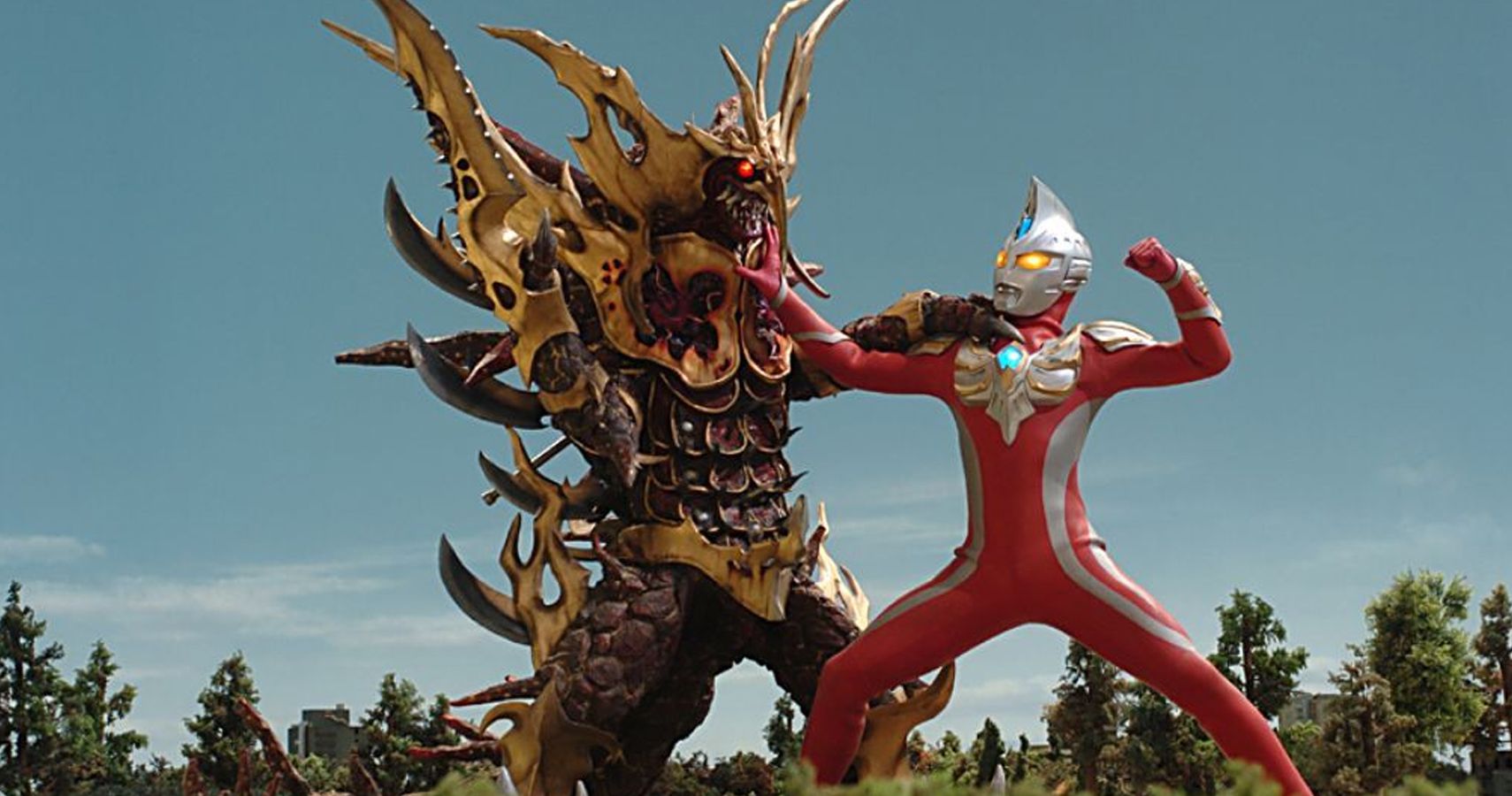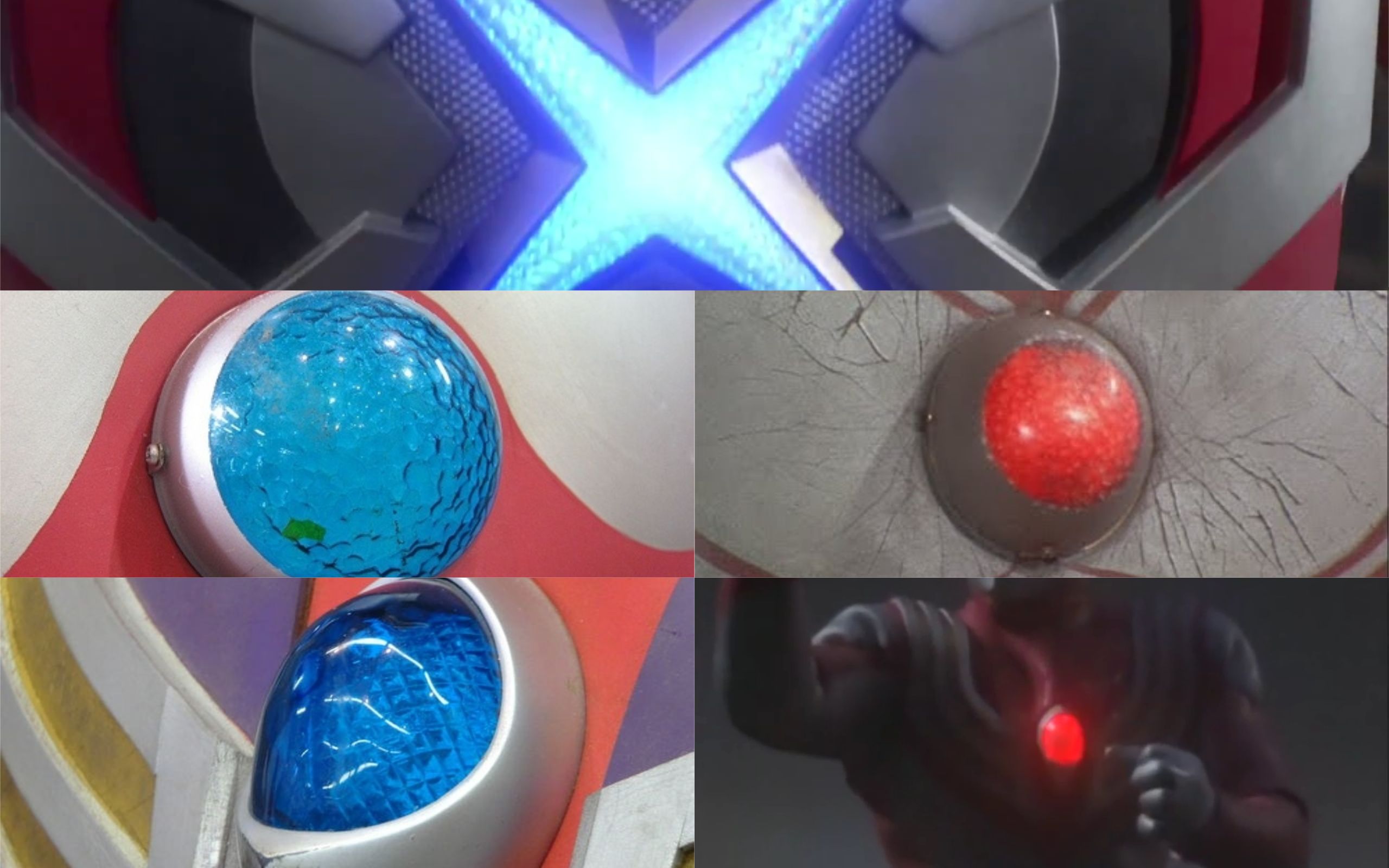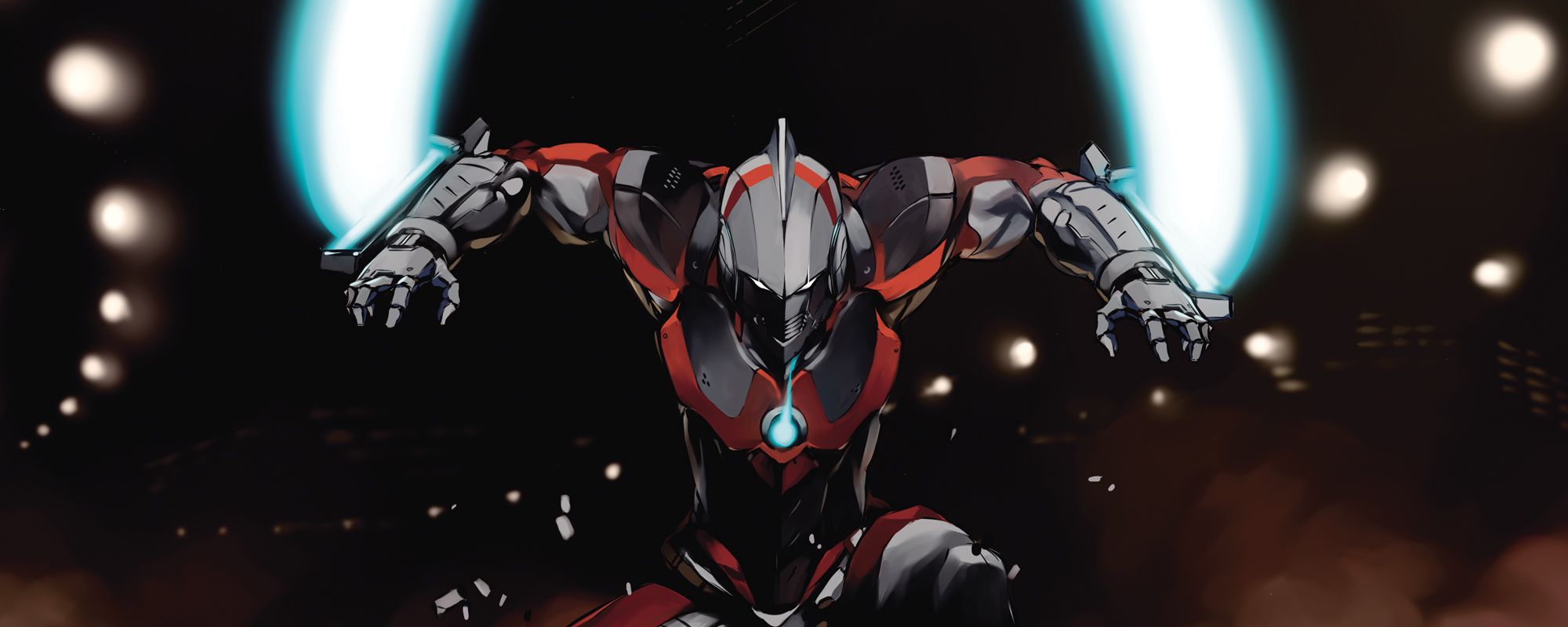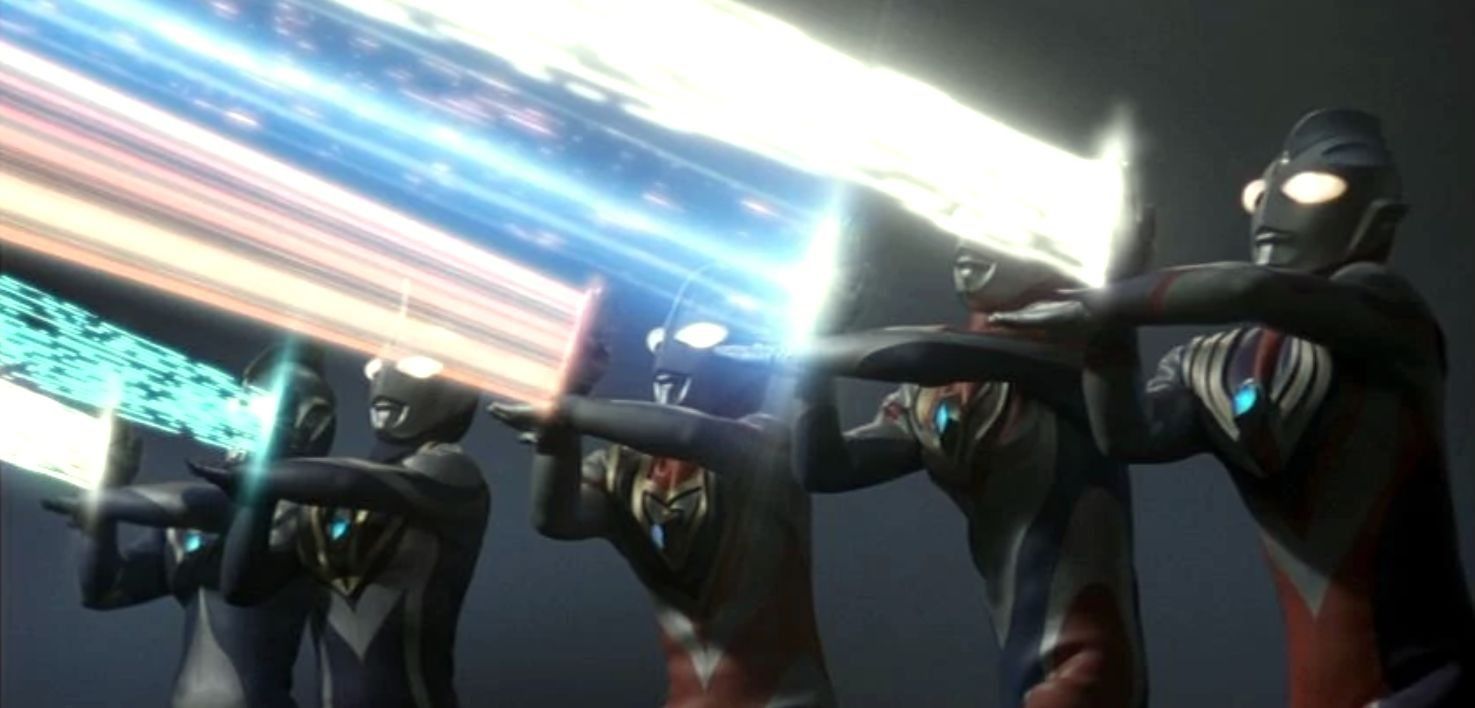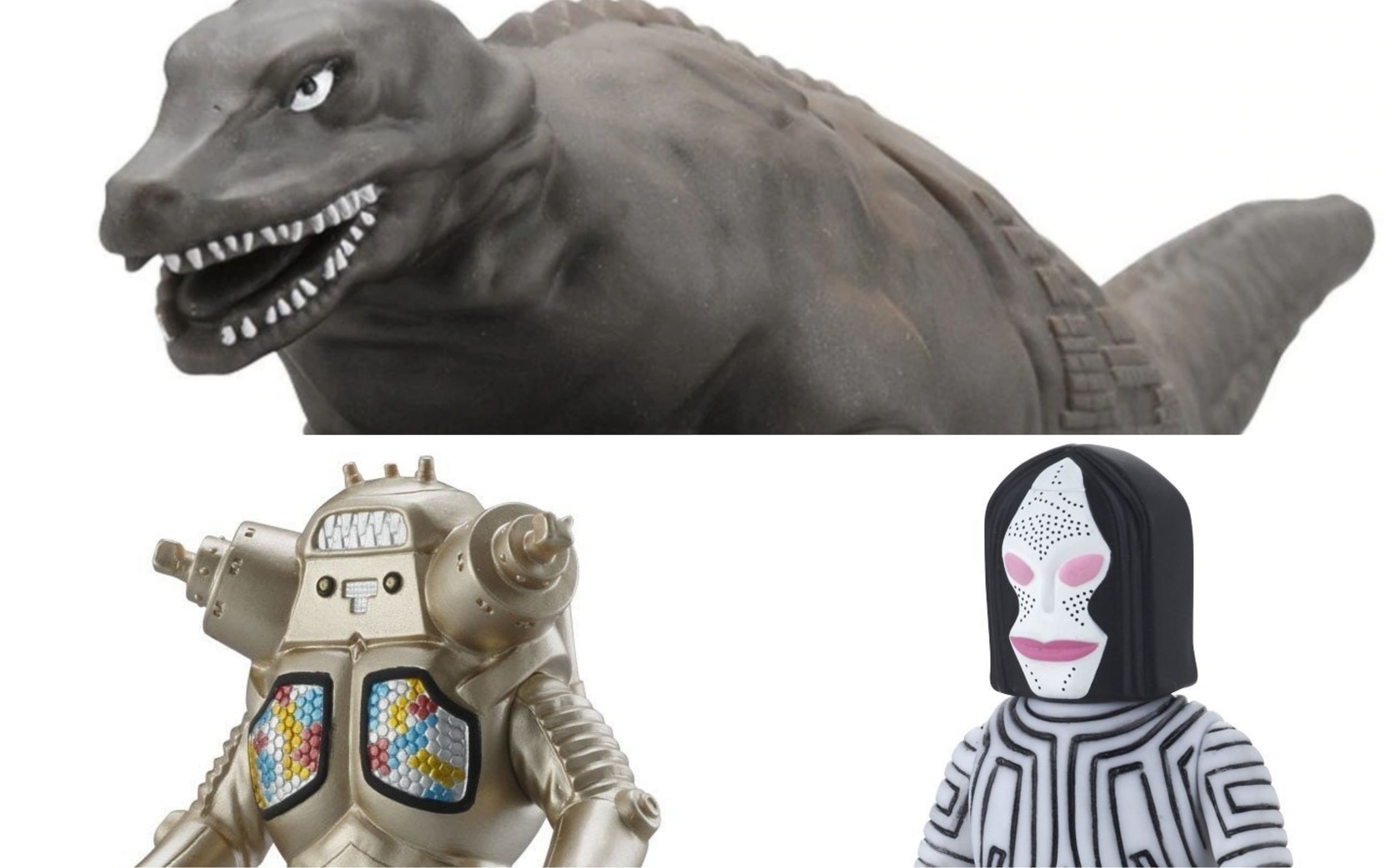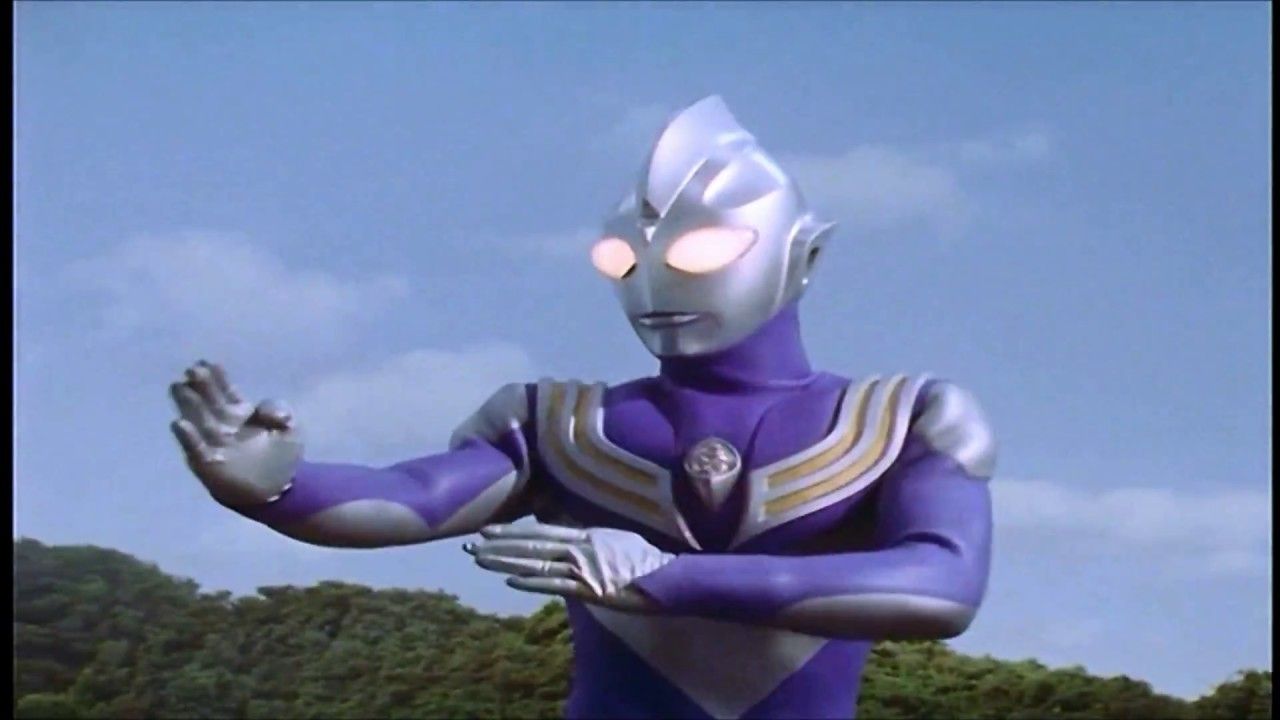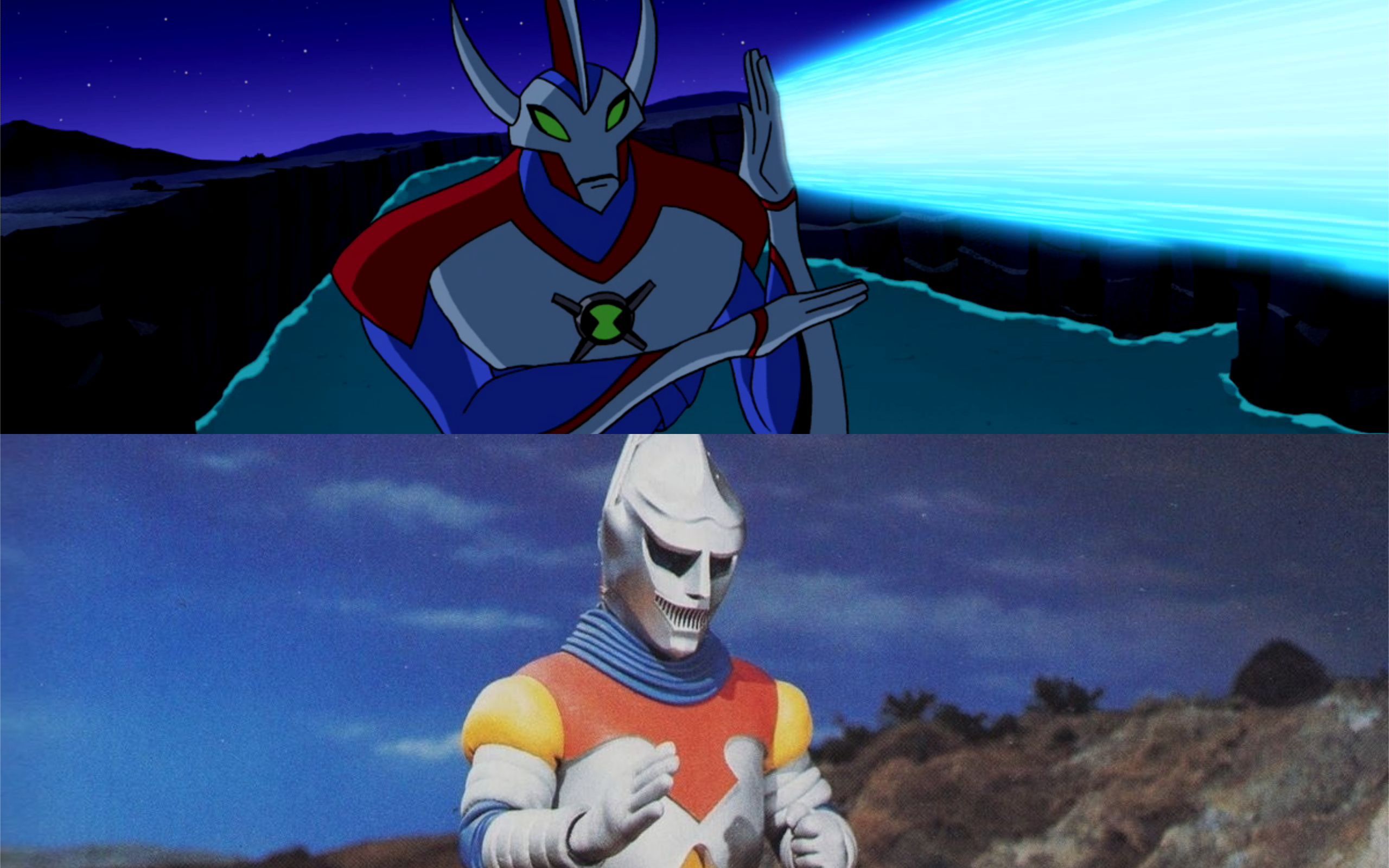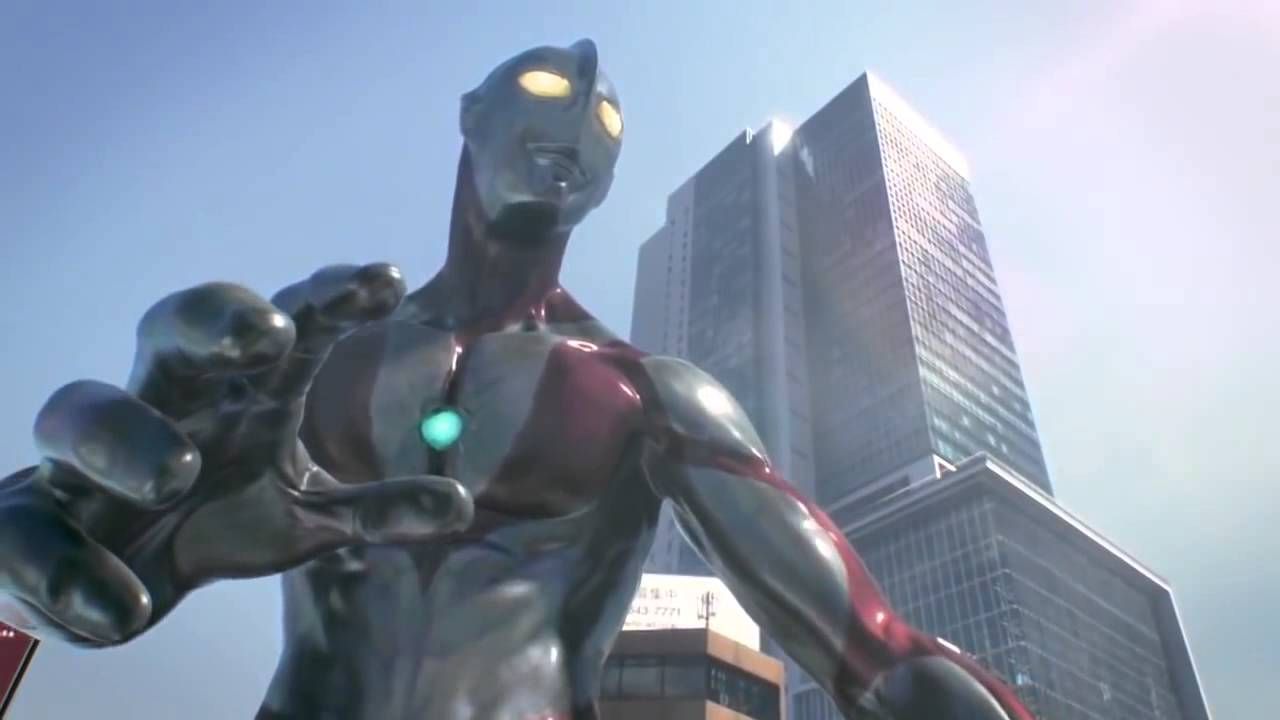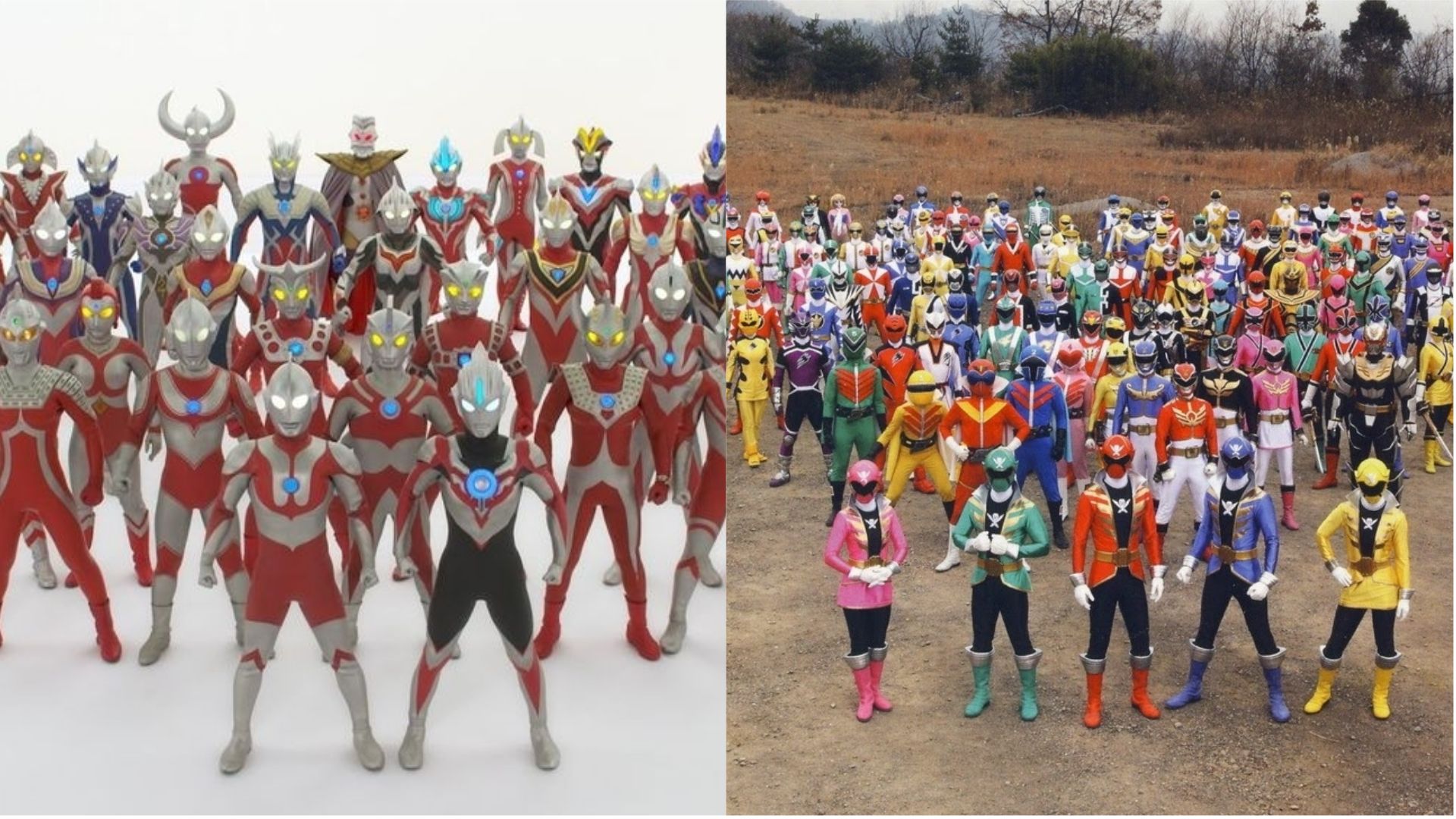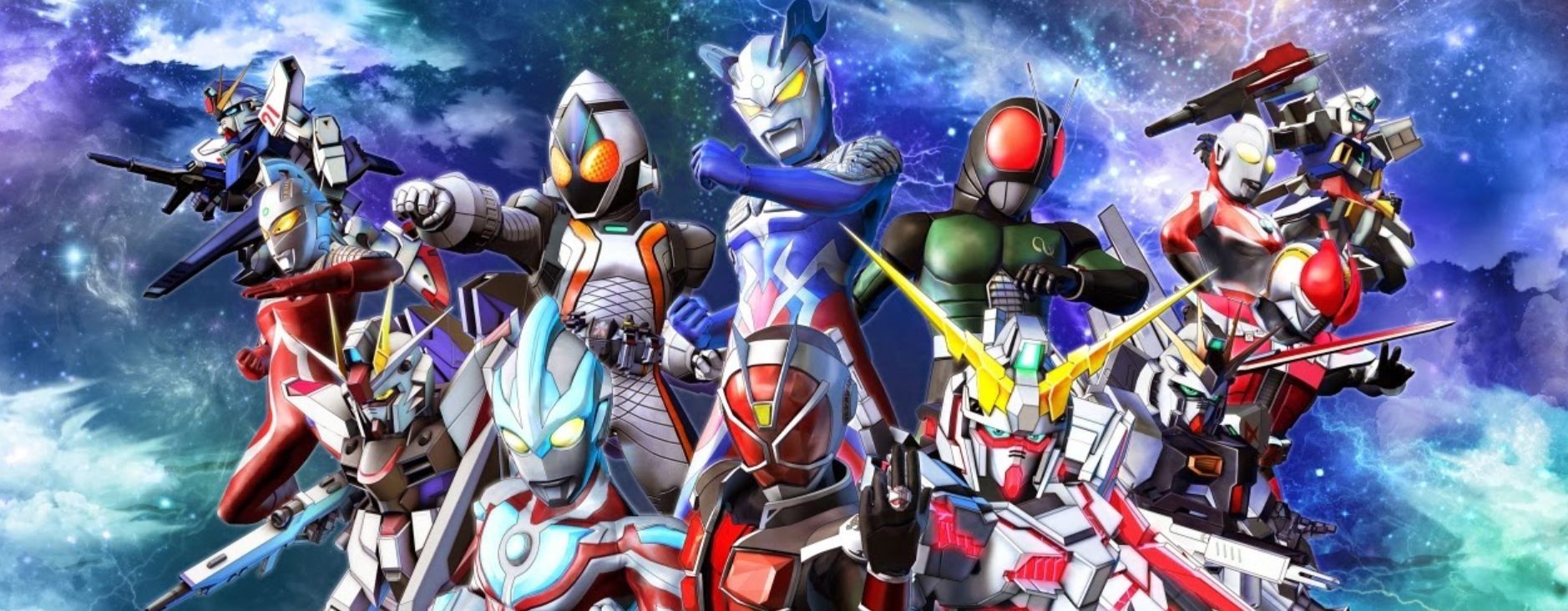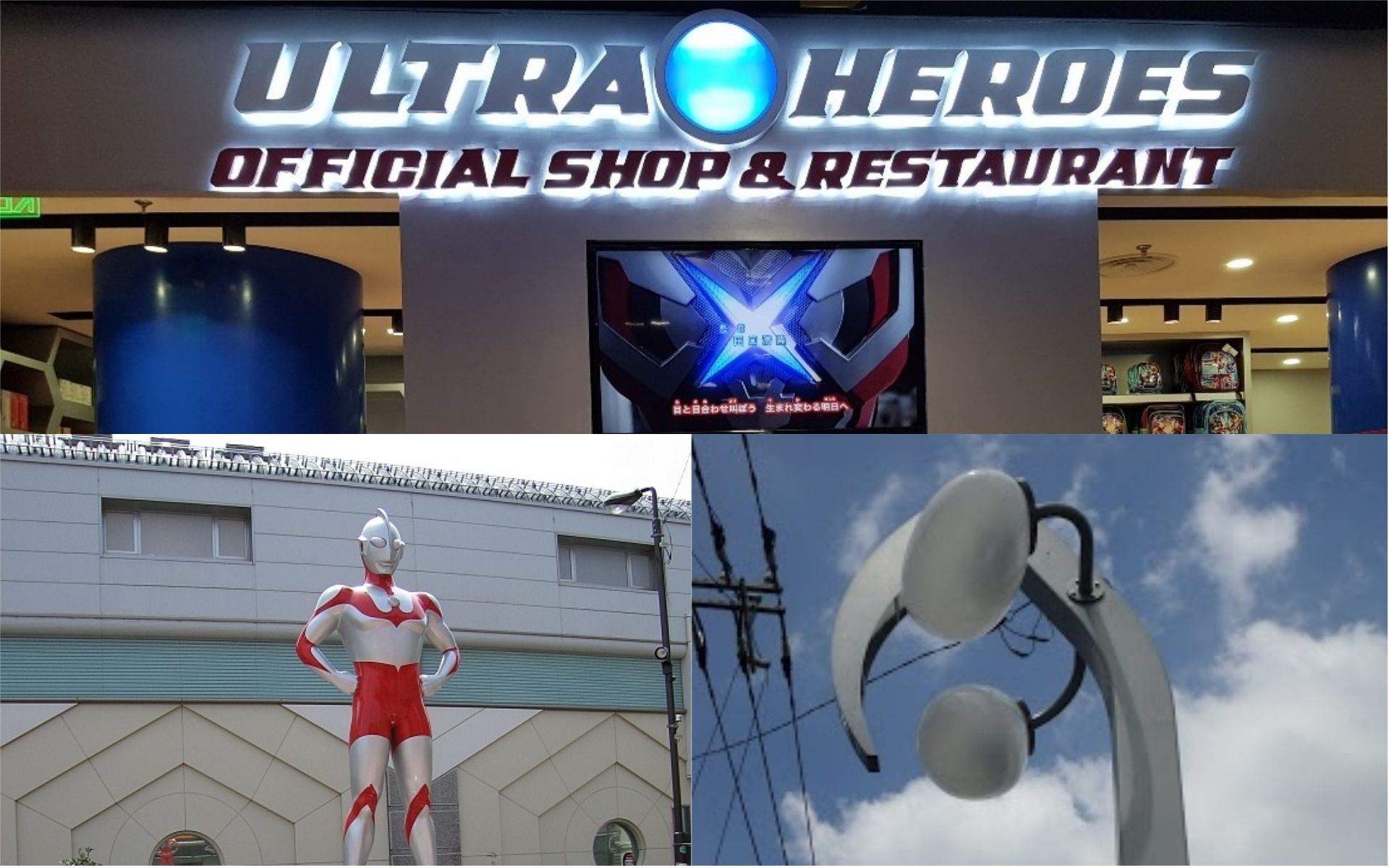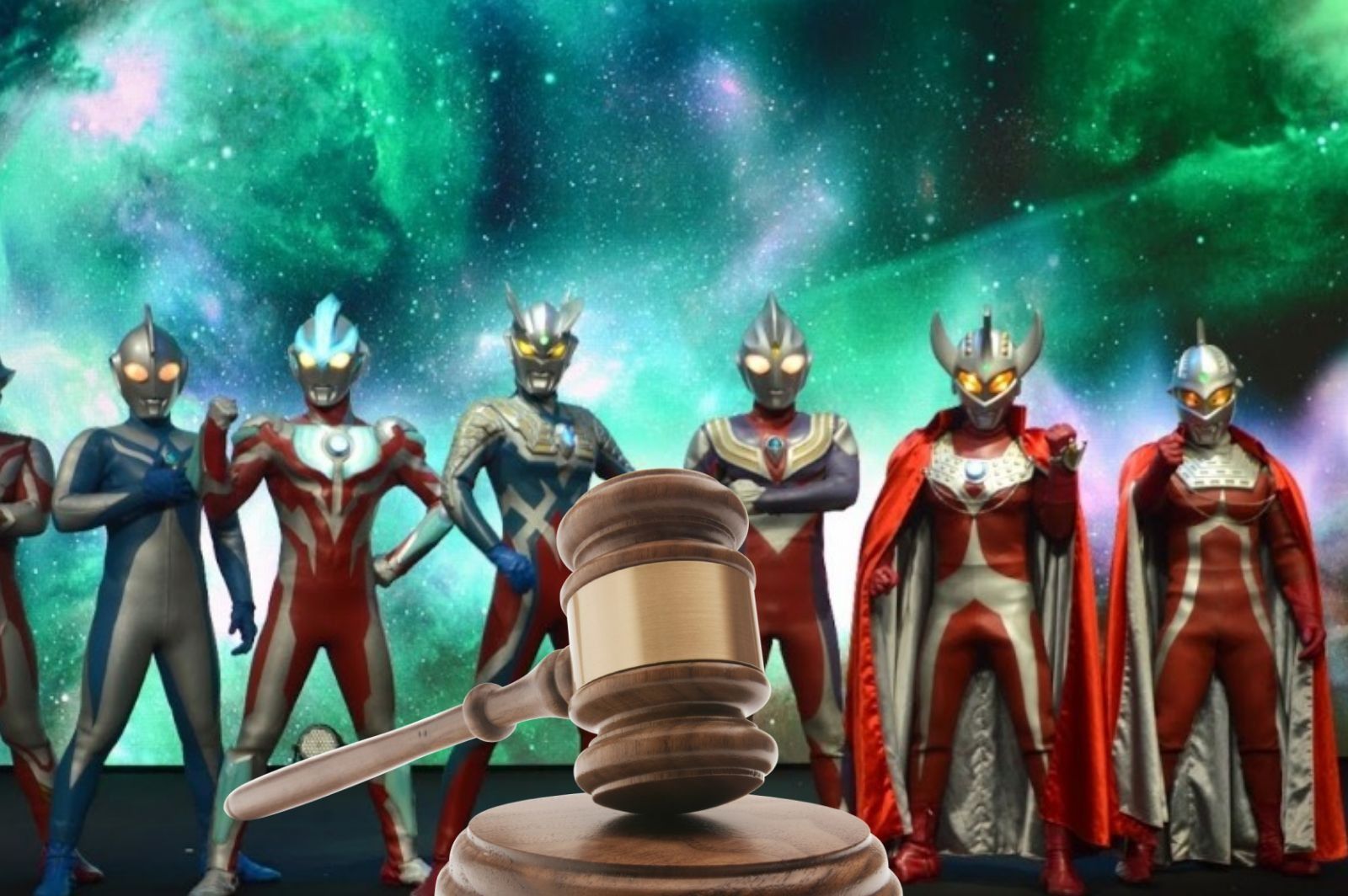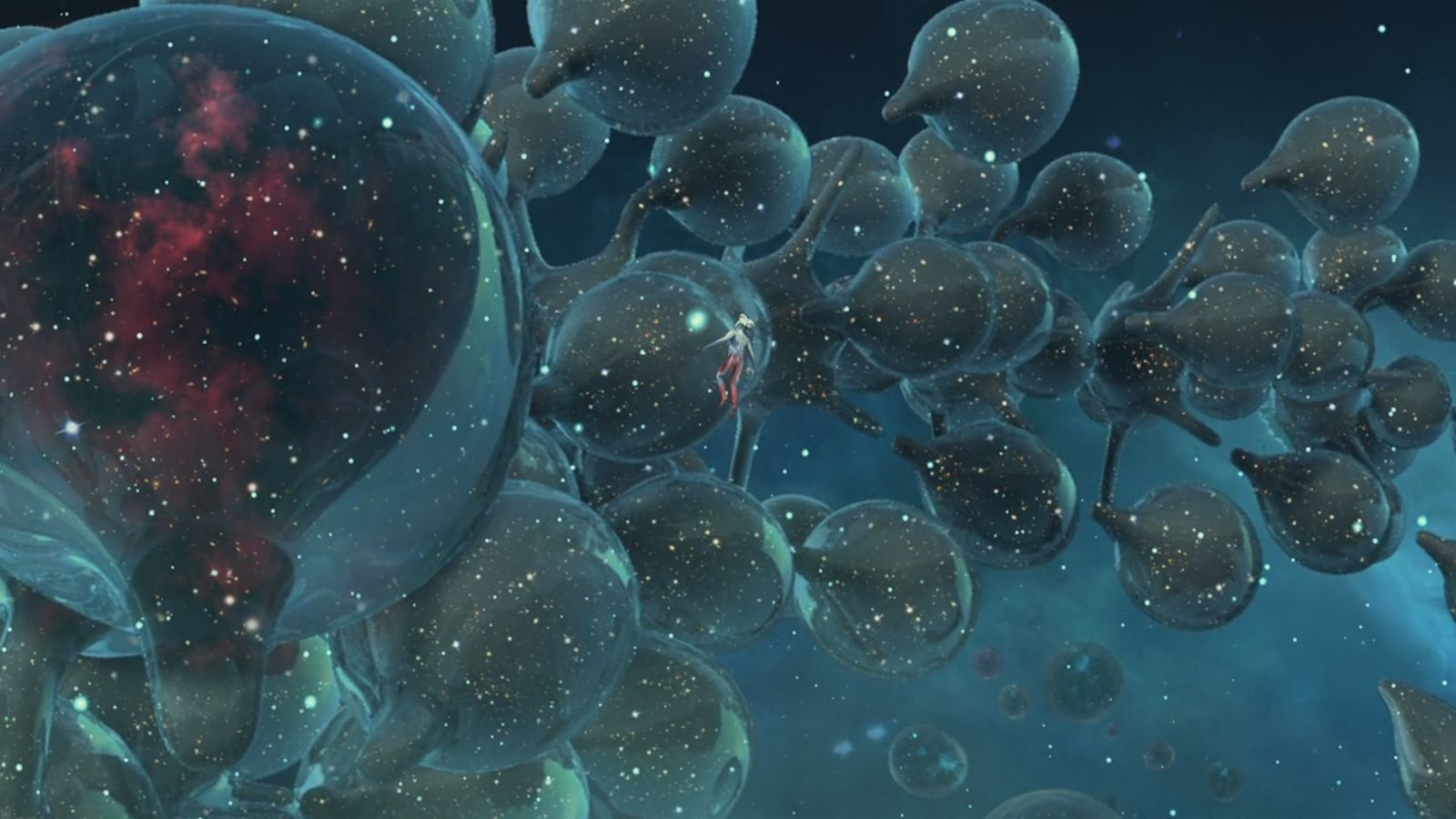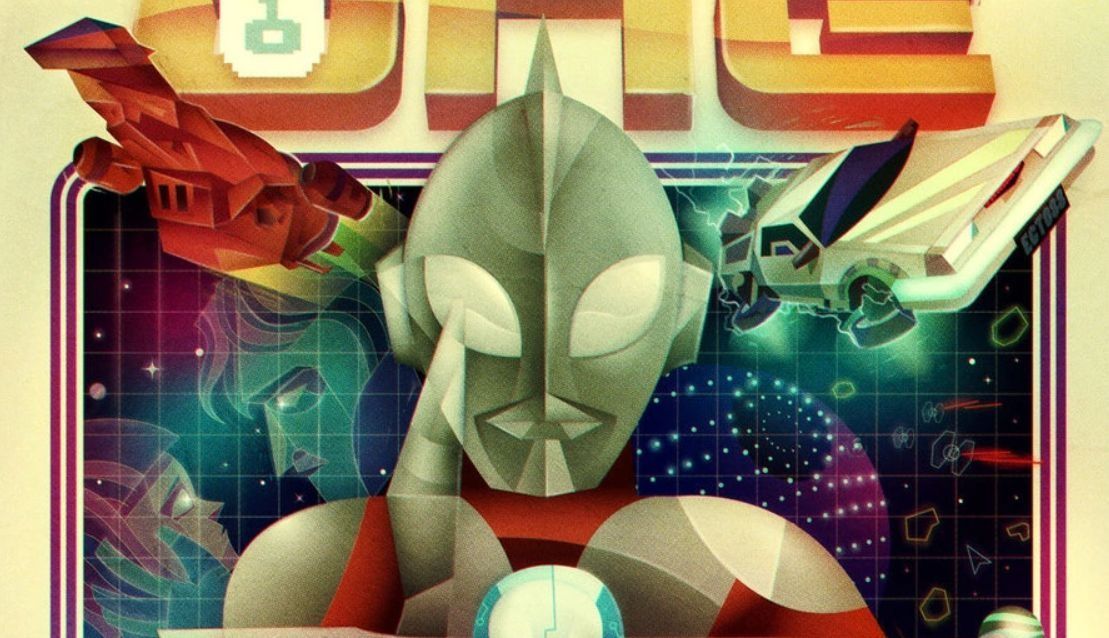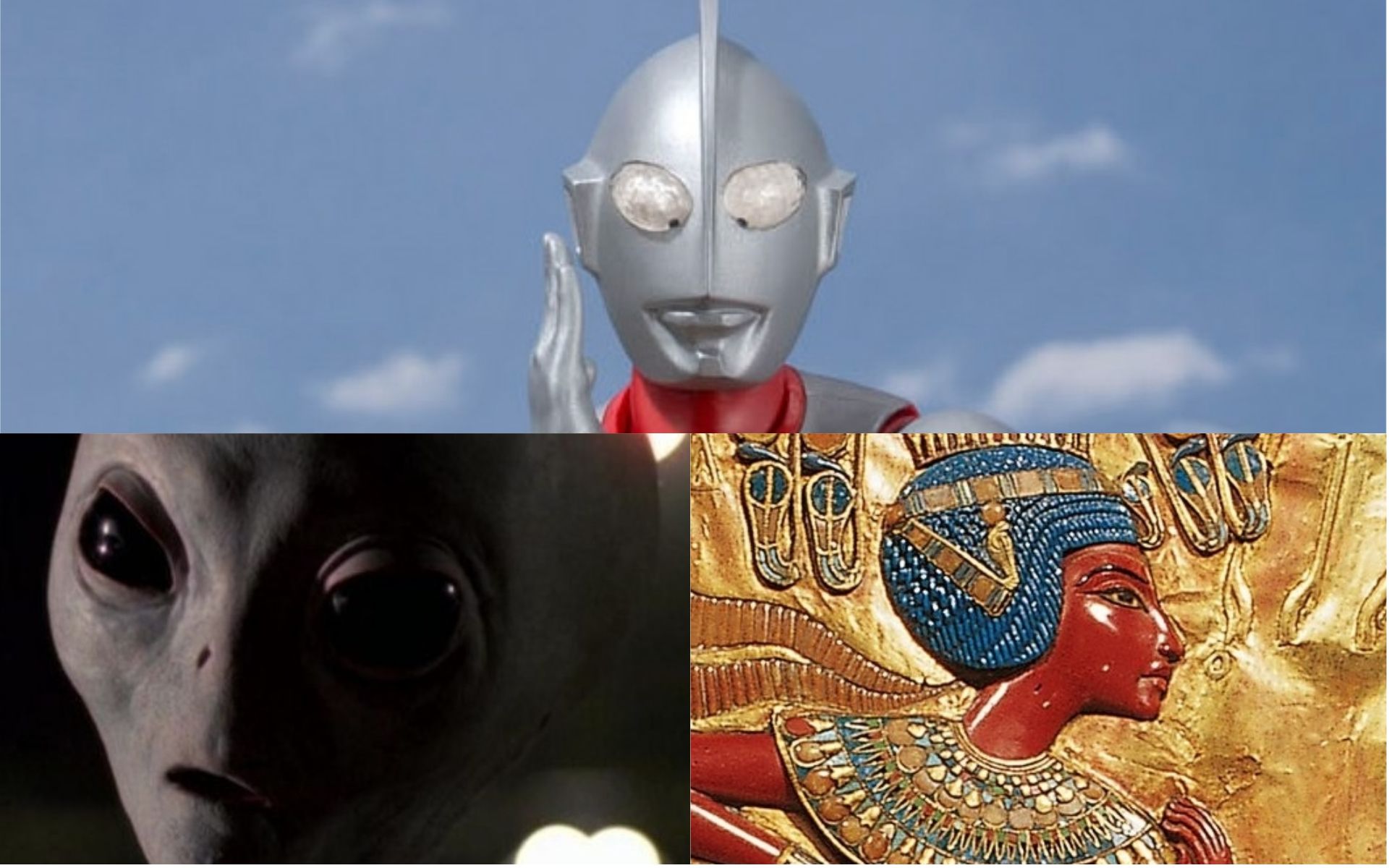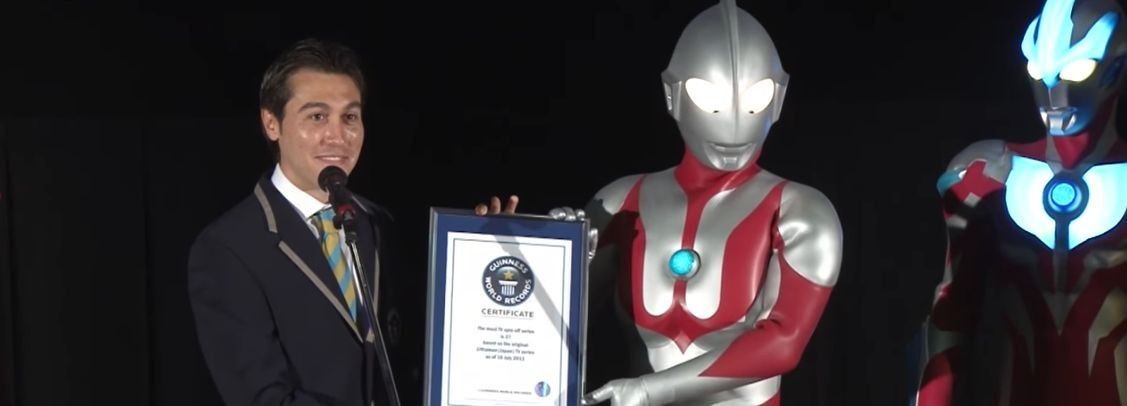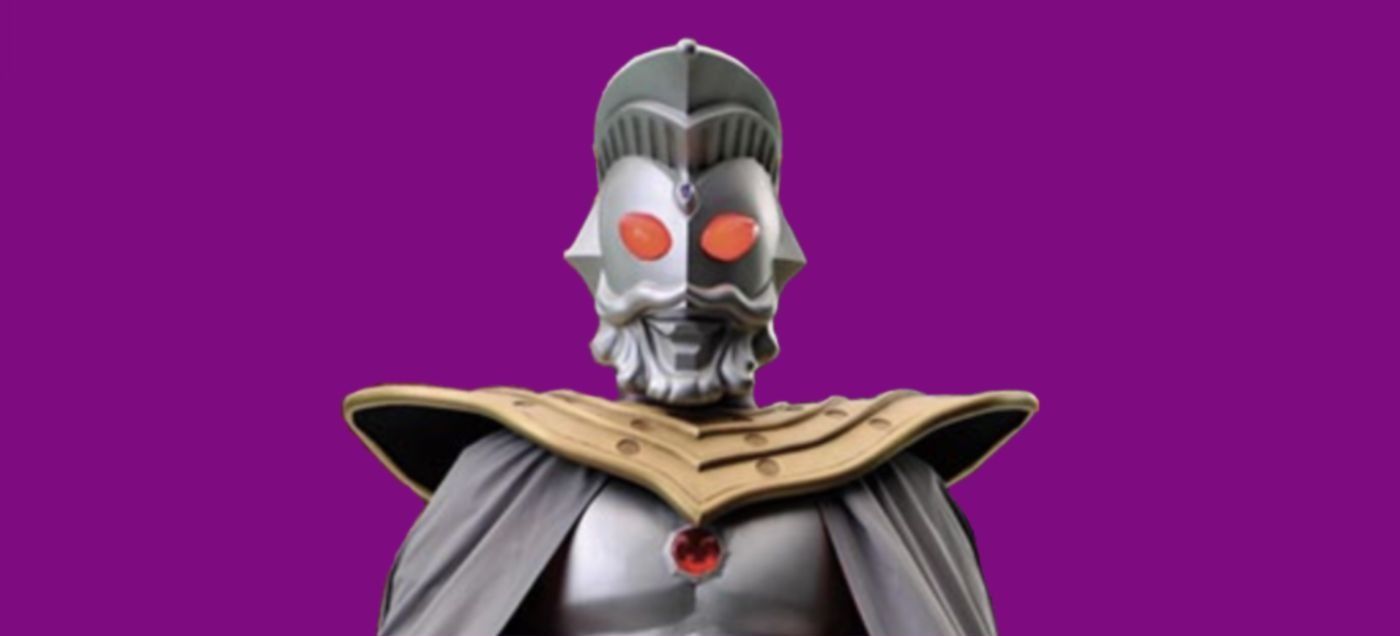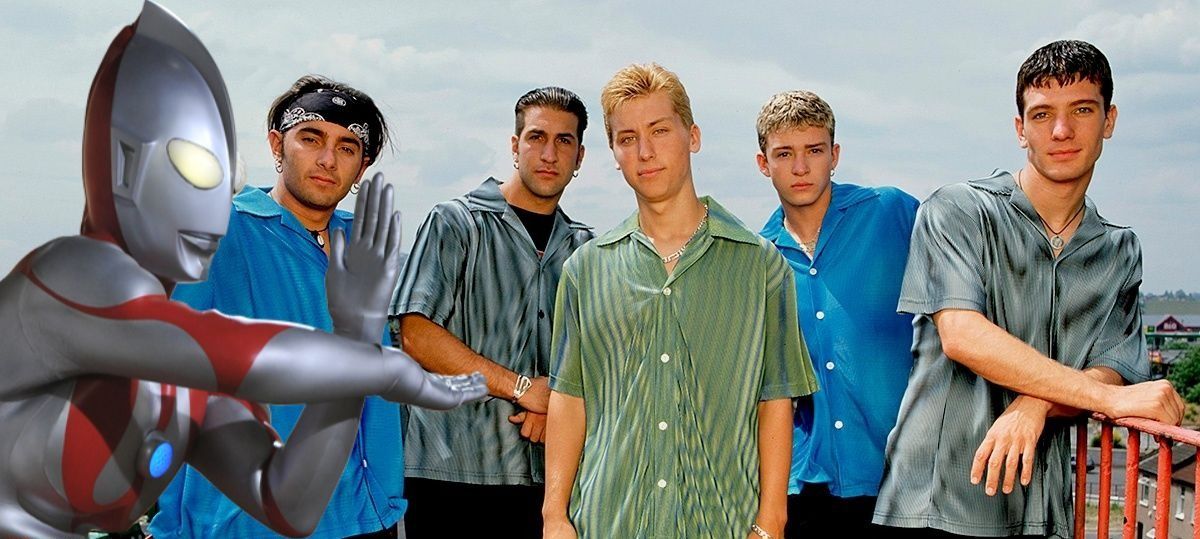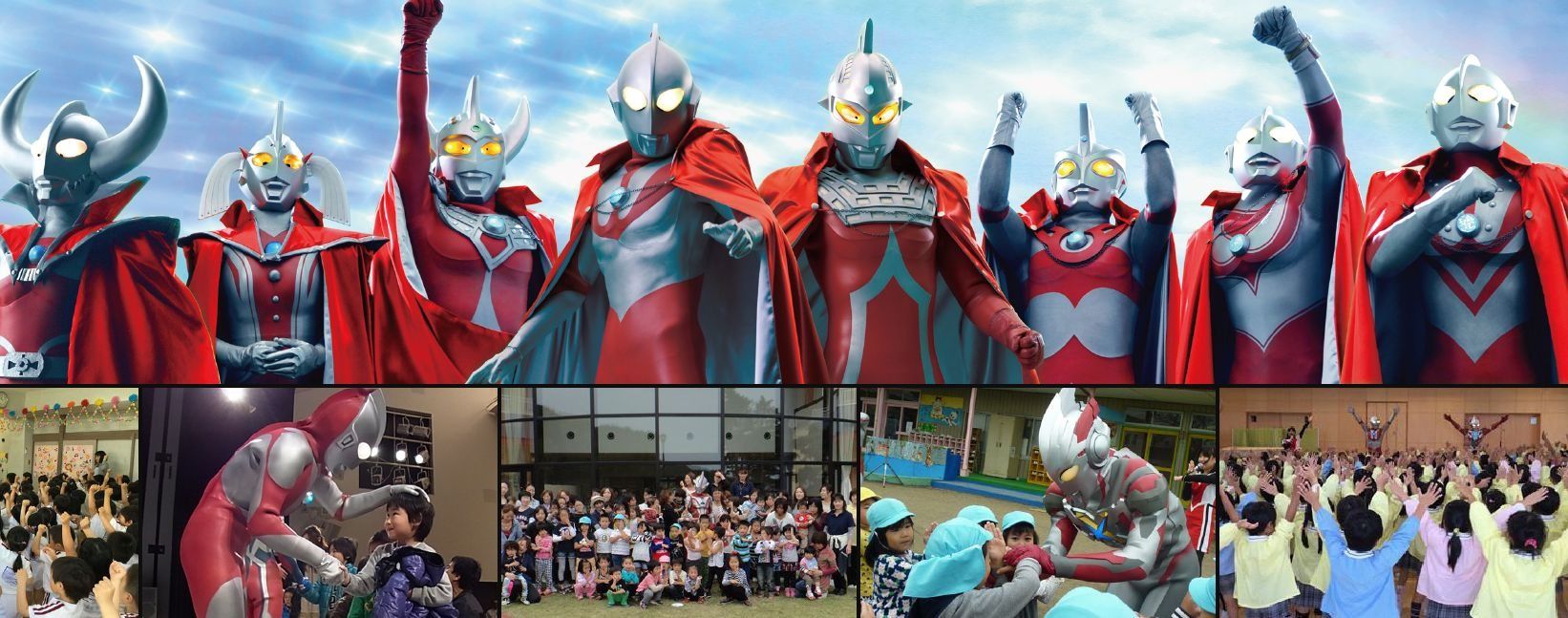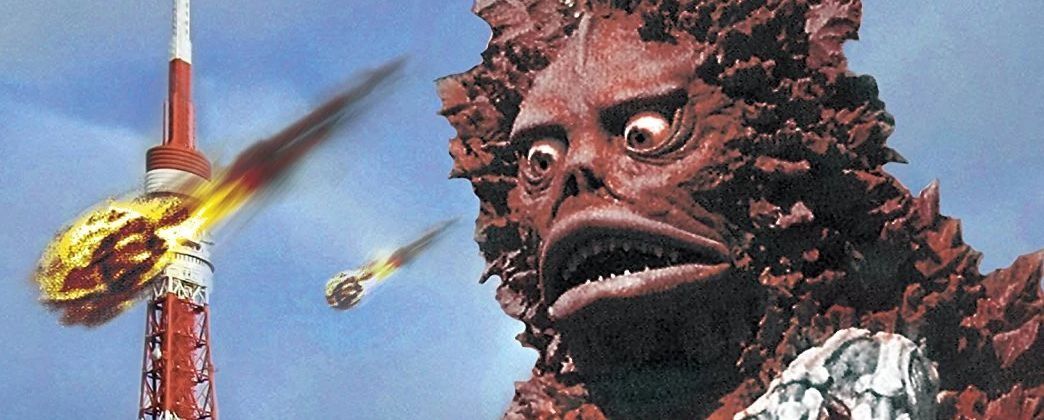The term tokusatsu is used in Japan to describe live action films or television that utilize any form of special effect. The word "tokusatsu" itself literally translated as "special effect" or "special filming." While internationally popular properties like Doctor Who are considered tokusatsu when aired in Japan, Western audiences will recognize the term for its association with Japanese produced series like the Godzilla film franchise and Super Sentai, a series of Japanese all ages superhero shows that is the footage and costume basis for the Power Rangers franchise. As popular as Godzilla and Sentai are, they come up short when compared to the literal biggest hero of them all, Ultraman.
Created by Eiji Tsuburaya, Ultraman has become a hugely popular character with the equivalent cultural significance that Superman has in the States. Ultraman is the combined being of a human and an Ultra who are aliens composed of light who require physical hosts to combat giant monsters. Since the debut of Ultraman in 1966 by Tsuburaya Productions, there have been multiple iterations of the franchise that feature different costumes, casts, and story elements. Each entry in the Ultra series has carved its own identity but never forgets their iconic heritage, with reoccurring traditions and iconography that are upheld to this day. Unfortunately, though the character receives monumental praise in Asia, his popularity outside of the continent is still relatively low compared to similar characters. Here is CBR's list of 20 fantastic, fascinating, and bonkers facts relating to this titanic Giant of Light.
19 HIS WEAKNESS IS COLOR CODED
Every superhero needs a flaw, some weakness or vulnerability that creates drama and tension should their enemy discover or manipulate it. The Ultras of the Ultraman franchise have what is called a Color Timer or Warning Light, a gemstone found on most Ultras’ chests that glows from blue to red indicating an Ultras’ loss of power.
As beings of light, the Ultras require solar energy to access their powers and the Light helps them know how much energy they have left before depletion. The Color Timer will go out on its own after three minutes but has been known to change early should the Ultra be facing a severe amount of damage or encounter solar hindering environments.
18 HE HAS INFLUENCED POP CULTURE IN ASIA AND BEYOND
Ultraman’s iconography has led to a significant amount of references, parodies, and homages in Asian media and beyond. Some of the more overt have been physically similar heroes featured in films and television, like Jet Jaguar from the Godzilla films or Ben Tenneson, the titular Ben 10, possessing an alien giant form inspired by Ultraman named WayBig.
One of the most surreal moments of Ultraman parody came in the Japanese film Big Man Japan. In Big Man Japan's climax the farcical titular hero meets up with a very deranged parody of Ultraman Taro and his family who proceed to gang up and mutilate a giant monster. Sometimes Ultraman's villains get attention, such as alien Baltan cameoing as a member of the Sinestro Corps in DC Comics.
17 EVERY ULTRA HAS A BEAM ATTACK
Even if someone is only vaguely familiar with Ultraman, they probably would recognize the character's signature pose which is standing in a crouched position with his right arm facing up crossed with his left arm horizontally. This is the Specium Ray, the finishing move of the original Ultraman and Ultraman Jack as well as the first iteration of the now famous Ultra Beam.
Every iteration of the franchise includes an Ultra Beam under a different name like Ultraman Ace’s Metallium Ray. There are other variations in the position or style of the beam such as Ultraseven’s Emerium Ray which is fired from his forehead. Regardless of where and how the Ultra Beamed is unleashed it is a crucial component for the Ultras' arsenal in their constant fight against evil.
16 HIS MONSTERS ARE AMAZING (AND HILARIOUS)
Like other entries in the tokusatsu genre, the Ultraman franchise enjoys iconic costumed characters as memorable and unique as their giant heroes. The monsters of Ultraman, or Kaiju, are appreciated by fans of giant city-stomping baddies even if they have no interest in the silver alien superhero they battle.
The baddies from Ultraman are ridiculously scary and humorous at the same time. Whether it is the crustacean-like Baltan race who shoots lightning from their claws, the surreal nightmare of walking spaceship conglomerate King Joe, or the far-out terror of Dinosaur Tank who is an equal part dinosaur and tank with the list going on from there.
15 HE HASN'T HAD THE EASIEST TIME IN THE WEST
Translating things from foreign countries is tricky, even just adding subtitles requires converting the script and dialogue into a new language with a different structure. The Ultraman franchise has received fairly faithful translations coming to the West with subtitled and dubbed translations that honor the original product, with one infamous exception.
4Kids Entertainment initially tried to adapt Ultraman Tiga with an English dub that aired on the Saturday Morning FoxBox programming block. The dub changed much from the original scripts. They now included jokes about earwax, pop culture references to Pokémon, and suddenly characters like the capable Captain Irma were turned into buffoonish comic relief. It was far from the best take on the character, and an example of Ultraman done dirty.
14 HE HAS BEEN FEATURED IN ANIMATION AND COMICS
Like many live action icons before and after him, Ultraman has received some expanded media in the forms of comic book and animation. Multiple comic books and manga volume have seen publication by companies like Dark Horse and Viz Media, with the most recent manga being a sequel to the original TV series directly titled ULTRAMAN.
The franchise has also received several acclaimed animations in the form of TV movies and OVAs, standing for original video animation released to home media. Tsuburaya has worked with several notable animation studios with their animated Ultraman adaptations including The☆Ultraman which was co-produced with Sun Rise Incorporated, and Ultraman USA co-produced with Hanna-Barbera. Currently, Tsuburaya is working with Production I.G to create a new anime series based on the ULTRAMAN manga.
13 HE STARRED IN A MYSTERIOUS TRAILER
In 2015 Tsburaya Productions’ YouTube channel had an odd but notable upload, a short trailer just under 3 minutes showing a very cinematic fight between Ultraman and a monster. The type of fighting depicted in this Ultraman trailer is normal stuff for the franchise with one exception; it was computer generated with no suit actors.
With no concrete information on the trailer, which has since been deleted from the Tsuburaya page, the assumed implication is this is text footage for a possible live-action film. Since the characters are animated and not limited by suits a the Ultraman in the trailer includes ideas that have been considered for past incarnations of Ultraman but never implemented such as skin-like textures all over his body, segmented toes on his feet, and a realistic opening mouth.
12 HE HAS A RIVALRY WITH POWER RANGERS
Friendly rivalries between popular franchises occur all over popular culture form Marvel and DC, Star Wars and Star Trek, Transformers and GoBots and so on. In Japan one of the biggest fights for supremacy of Children’s television is Ultraman and Super Sentai, the latter being the franchise most recognized to Western audiences as the basis for Power Rangers.
Ultraman and Super Sentai have fought each other for control of children’s attention with Ultraman, by and large, coming out the victor when it comes to overall popularity in Japan. Internationally speaking, however, Super Sentai has bested their towering foe thanks to the international popularity of Power Rangers. Regardless, Super Sentai has paid tribute to their deserving rival with shout-outs to Ultraman iconography.
11 HE HAS TEAMED UP WITH GUNDAM (AND OTHER HEROES)
If there's one thing fans love more than a story with their favorite character, it is a story with two of their favorite characters together. Ultraman has had several crossovers with other popular Japanese heroes, with many of these team-ups occurring in the realm of gaming.
The most frequent heroes to interact with Ultraman characters have been the ones from the Kamen Rider and Gundam franchises, particularly in games released by Bandai Namco such as the Compati Hero Series. Ultraman has also teamed up with Kamen Rider directly in the form of a TV special called Ultraman vs. Kamen Rider.
10 HE HAS LEFT A PHYSICAL MARK
With Ultraman being so culturally significant to Asian pop culture it isn't enough for the character to live only in television and games, it's a 24/7 experience. The most recent example of Ultraman receiving recognition outside of the screen is a joint venture between Tsubaraya Productions and Malaysian company Circle Corp, the two joining forces to create the first official Ultraman themed restaurant and gift shop Ultra Heroes.
Ultra Heroes is far from the first time Ultraman has been immortalized with food and architecture. The residential area of Soshigaya-Okura Station was the original home of Tsubaraya Productions and to honor this the district is full of Ultraman imagery and decoration. Tourist perusing the area will find lamp posts, stores, and statues all dedicated to the Giant of Light.
9 HE IS IN THE CENTER OF A LONGSTANDING LEGAL BATTLE
One of the more depressing aspects of the Ultraman character is the long-term legal battle they have had with Thai based company Chaiyo Productions over the international rights to the Ultra Series. Chaiyo Productions has insisted they have been given the rights to everything involving Ultraman in territories outside Japan. These rights were allegedly given to Chaiyo Productions by the son of Tsubaraya Productions founder Eiji Tsuburaya Noboru Tsuburaya in 1976 in exchange for a monetary loan.
What has followed in the years since Noboru's death in 1995 is a legal full mess full of contradicted claims, unverified documents, unauthorized productions, and overall confusion. The ordeal is so infamous that Super Sentai parodied it in their mature audience satire series Akibaranger. A recent ruling by a district court of California has found in favor of Tsubaraya Productions claims of ownership and is hoped by many fans to be the end of this tumultuous legal ordeal.
8 THERE IS A WHOLE MULTIVERSE OF ULTRAS
Though each new iteration of the franchise is stand alone, the events that take place are in continuity with each other thanks to the Ultra Series Multiverse. Like the continuities existing in DC and Marvel comics, the Ultraman Multiverse consists of several universes each containing the home of one or many Ultras from the franchise's history.
Initially hinted at in the Ultra Q and Ultraman Tiga incarnations of the franchise, the Ultraman Zero film Ultraman Zero The Movie: Super Deciding Fight! The Belial Galactic Empire confirmed the existence of the Multiverse. With its canonicity established, the Ultra Multiverse is now a referenced plot point utilized by the latest Ultra installments such as Ultraman Saga and Ultraman X.
7 HE WAS ALMOST IN THE READY PLAYER ONE FILM
At the climax of the Ready Player One novel by Ernest Cline, protagonist Wade Owen Watts uses the tool of Ultraman's transformation, called a Beta Capsule, and transforms into the massive hero to combat the villainous Sixer controlled Mecha Godzilla. Fans of the book were very excited to see this on screen.
Unfortunately, Warner Brothers were unable to acquire the rights Ultraman resulting in the character being replaced his role in the film with their intellectual property The Iron Giant. It can be assumed the ongoing legal fight over Ultraman's usage outside of Japan had a factor in WB's failure to acquire the rights, but no matter the case, it is unfortunate that fans of the book missed out on one of its best moments of fan service.
6 HIS DESIGN IS BASED ON ART AND ALIENS
When earlier versions of Ultraman appeared too monstrous, Eiji Tsuburaya instructed designer Tohl Narita to create a more human heroic look for the character. Narita looked to historical sources for inspiration building Ultraman's design around classical art. Soon Narita was incorporating artwork from Greece, ancient Egypt, the European Renaissance and mixed it with greyman alien aesthetics.
Ultraman's signature fin, running from his mouth to the top of his head in a dorsal fin like fashion, is also a design element meant to reinforce Ultraman's interstellar origins. The design team also were careful in the selection of Ultraman's colors to make him look as alien and heroic as possible, with silver to imply advanced technology seen on a spacecraft and red that invoked the barren unknown of a Mars-like planet.
5 HE IS A GUINNESS AWARD WINNER
In the year 2013, Ultraman received the esteemed honor of a Gunness World Record. With 27 iterations of the Ultra franchise, as of the time of the award, various Ultras received an award for most spin-off shows from a representative of Guinness along with the latest hero in the franchise Ultraman Ginga and his actor Takuya Negishi.
As of this writing, there have not been any attempts by another show to claim the award from Ultraman, but considering there have been seven new spin-offs of Ultraman between now and then it is safe to assume that its title is still secure.
4 HE WAS CENSORED IN MALAYSIA
One of the most popular regions that celebrate Ultraman is the Asian country of Malaysia, an uncomfortable fact considering a controversy the franchise caused in the country four years ago. In a passage of an Ultraman comic called Ultraman: the Ultra Power a profile page of the character, Ultraman King created a debate for Malaysian society.
In Ultraman King's bio, there is a portion describing Ultraman King as "assumed to be, and respected as the 'Allah', or the Elder of all Ultraman warriors." The usage of the word "Allah," the Arabic word literally meaning God, caused great frustration for Malaysia's devoted Islam community who believe the word should be used exclusively for those of the Islamic faith. The book ended up being banned because of this.
3 HE MET NYSNC LIVE ON STAGE
In 2003, just as the boy band legend that is NSYNC was coming to a shattering close, the band made a few sporadic appearances including one broadcast on Japanese television. During this appearance, band member Chris Kirkpatrick offhandedly mentions his love of Ultraman as a kid, only for the Giant of Light to appear human-sized on stage with the American heartthrobs.
What follows is a segment that is equally adorable and surreal, like most aspects of the Ultraman franchise tend to be. It's hard to tell if the audience is into the ambitious crossover of popular culture, but Kirkpatrick and the band seem to be very much into it, even replicating the famous Ultra Beam pose together with the hero himself and two TV presenters.
2 HE HAS A CHARITY NAMED AFTER HIM
Founded by Tsuburaya Productions, the Ultraman Foundation's mission statement is to try and bring out some of the good that Ultraman represents into the real world where it can help in his name. With a mission statement that "acknowledges the children as the hope for the future, and will provide everlasting support in all kinds of ways for welfare and well being of all children," the Ultraman Foundation has many compassionate accomplishments attached to their name that would make any hero proud.
From 2011-2017 the Ultraman Foundation was able to achieve great feats of charity including disaster relief, donations to impoverished districts, public appearances, children outreach, public service announcements and more. Though their efforts seemed to have died down as of the time of this article's writing, the kind acts of philanthropy they accomplished while in operation is still something to be admired.
1 HIS PROGRAM WAS ORIGINALLY A HORROR SHOW
Even though Ultraman is the most recognized icon of the franchise, the Ultra Series did not start with him, but rather a sci-fi horror series called Ultra Q. Envisioned by Eiji Tsuburaya as a Japanese equivalent of The Twilight Zone, the show revolved around a core cast characters who find themselves involved in paranormal encounters such as ghosts and aliens.
Some of the costumes were reused from the Godzilla films due to Tsuburaya having a connection with the company Toho, owners of the Godzilla franchise and investors to the then fledging Tsuburaya Productions. Ultra Q was meant to focus on many types of stories, but the giant monsters proved to be the most popular episodes which led to Tsuburaya shifting the focus to center more on them. After the run of Ultra Q ended with 28 episodes, they decided to create a new giant monster series from scratch resulting the first incarnation of Ultraman.

